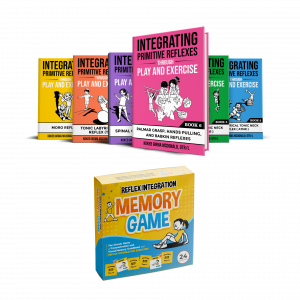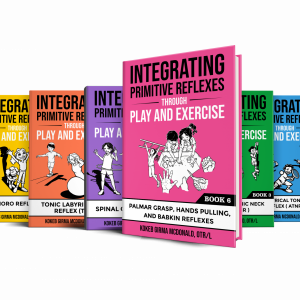A guide for parents and service providers
Hello parents and dedicated therapists! 👋 I’m Kokeb McDonald, an occupational therapist and the founder of the Reflex Integration Through Play program. Today, I want to dive into a topic that often comes up in our discussions—the Fear Paralysis Reflex (FPR). Whether you’re a parent or a therapist, understanding this reflex can be crucial for supporting your little ones or clients. So, let’s break it down together! 🌟
Want to learn about the FPR from a video? Check it out…
What is the Fear Paralysis Reflex? 🤔
The Fear Paralysis Reflex is a primary motor reflex that emerges around the 5th to 7th week of gestation and typically integrates by 32 weeks in utero. Essentially, it’s the fetus’s way of responding to a threat by causing the whole body to shrink or freeze. Imagine it as the body’s first line of defense—a protective mechanism to help the fetus survive. 🛡️
Why is it Important? 🌱
The FPR is crucial for survival and development. It helps the fetus react to danger, aids in the development of the Moro reflex (another important reflex), and supports stress management and sensory processing. In short, it sets the stage for many vital developmental processes. 👶💪
Signs of an Active Fear Paralysis Reflex 🆘
If the FPR doesn’t integrate properly, it can lead to various challenges as the child grows. Here are some signs to look out for:
- Hypersensitivity: Overreacting to tactile, visual, or auditory stimuli.
- Freezing Response: Extreme shyness or inability to join in activities.
- Selective Mutism: Speaking only in comfortable environments, like home, and being silent elsewhere.
- Anxiety: High levels of anxiety affecting daily functions and social interactions.
- Physical Symptoms: Sweating, shallow breathing, and rapid blinking.
- Social Difficulties: Challenges in joining new environments or interacting socially.
What Can You Do? 💡
First and foremost, if you suspect that your child or client has an active FPR, seek support from trained professionals. Reflex integration is a specialized field, and it’s important to handle it with care. Here’s how you can help:
- Observe and Document: Keep a log of behaviors and triggers. This information is invaluable for therapists.
- Seek Professional Help: Connect with occupational therapists, physical therapists, or other specialists trained in reflex integration and certified in a program like our Reflex Integration Through Play program.
- Holistic Approach: Addressing FPR isn’t just about exercises. It involves looking at the child’s or client’s overall emotional and physical well-being.
Working with Professionals 🌐
In our Reflex Integration Through Play program, we offer comprehensive training for therapists. We provide consultations, group coaching, and a supportive community for service providers to ensure you never feel alone on this journey. Everything is accessible online, making it easy to get the support you need. 🌍💻
Final Thoughts 💭
Handling the Fear Paralysis Reflex requires a thoughtful and careful approach. Always remember, each child is unique, and what works for one may not work for another. If you’re a therapist, sharpen your skills and be mindful of how you interact with your clients. If you’re a parent, trust your instincts and seek guidance when needed. Together, we can make a difference! 💖
Stay tuned for more videos and updates. Don’t forget to subscribe to our channel and reach out with any questions. We’re here to support you every step of the way! 🌈✨





